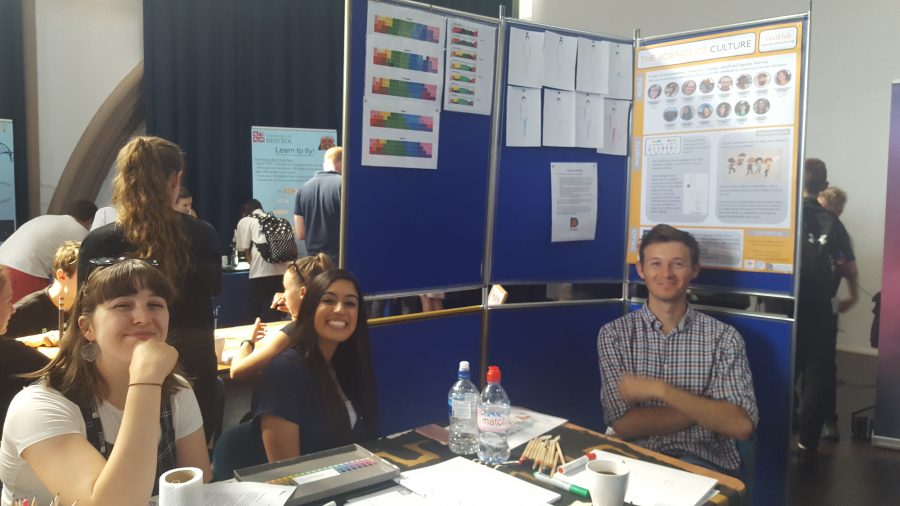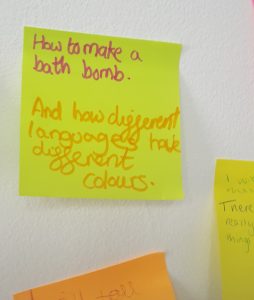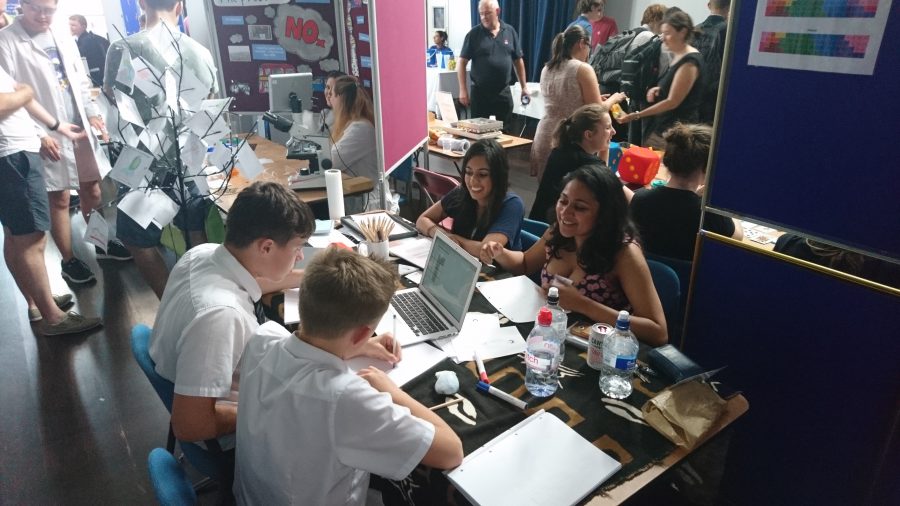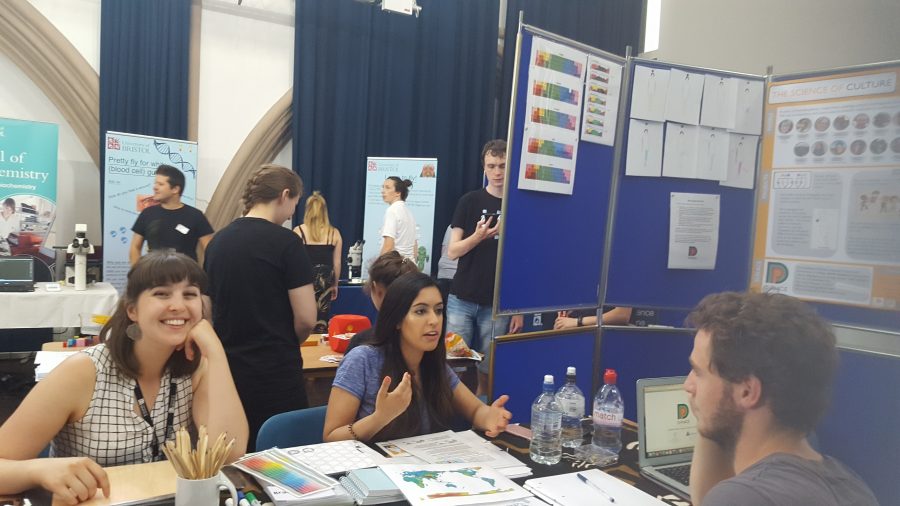
Last week, the excd.lab sent a team to “Big Bang Bristol“, a two day science, technology, engineering, and maths extravaganza.
Guest post by Shakti Puri & Lucy Harries.
The fair had the purpose of introducing children to research through hands-on experiments, activities, and live demonstrations. Our stall, entitled the ‘Science of Culture’, consisted of a range of activities based on ongoing lab work, such as kinship, cultural transmission, linguistic relativity, and ecology, with the aim of engaging and educating students on the science behind cultural diversity. We (Alarna, Lucy, Shakti, and Sam) originally targeted activities at students aged 11-15, but we had unexpected interest from younger children and families, so our activities were adapted to suit the wide range of enthusiastic participants.
Day 1 consisted of a school session in the morning, followed by an afternoon open to the general public. The most engaging activities appeared to be those based on linguistic relativity, specifically with regards to colour and body parts. Giving the children a blank cartoon person, we first asked them to colour in and label different parts of the body, such as ‘the right arm’ or ‘the left foot’, before moving on to more general terms, such as ‘limb’. These instructions brought about a wide range of responses, particularly with the term ‘limb’, which varied even across peers (e.g., some would colour in the arms or legs, some would colour in the head!).

The colour activity gained the most interest across age groups, and proved to be quite controversial at times! We first asked the children to name as many colours as they could, before showing them charts illustrating variation in the number of basic colour terms cross-culturally. They were then asked to draw the boundaries between colours on a chart, such as ‘green’ and ‘blue’, which showed variation. Despite arguments, the children seemed fascinated to learn that “different languages had different colours”, a concept they had never considered before.
The second day consisted of predominantly secondary schools, with one or two primary schools attending the fair later in the afternoon. Due to a smaller number of participants, we were able to engage more with the students, who were able to complete all of the activities on offer. Of particular interest were the D-PLACE related activities, which were being trialled for the first time. Our D-PLACE dominoes, which consisted of using D-PLACE’s search option to pair societies and languages, introduced the children to D-PLACE’s wide database of information, as well as encouraging them to consider the links between linguistic, cultural and environmental practices. We also showed children D-PLACE maps based on climate and number of languages to see if they could infer any patterns. This activity engaged the children with linguistic spread, introducing them, in a simplified manner, to the study of diversity and phylogeny.


Overall, the fair was a fantastic opportunity to obtain useful feedback about our resources, as well as to engage the wider public with university research. The children’s positive feedback and enthusiasm for our work introduced them to the use of scientific methods in the study of diversity, and was a great opportunity to engage them with the ‘Science of Culture’.